Unleashing Your Creativity in Painting
Painting is more than just applying color to a canvas; it’s a journey into the depths of your imagination, a way to express your innermost thoughts and feelings. Whether you're a seasoned artist or just starting out, tapping into your creative potential can open up a world of possibilities. Imagine standing in front of a blank canvas, your heart racing with excitement and anticipation. What will you create? How can you transform your ideas into a visual masterpiece? In this article, we will explore various techniques, inspirations, and tips that will help you enhance your painting skills and unleash your creativity.
Every artist has a unique story to tell, and painting is one of the most powerful ways to share that narrative. By understanding the fundamentals of color theory, discovering your artistic style, experimenting with different mediums, and incorporating mixed media, you can elevate your work to new heights. Are you ready to dive deep into the vibrant world of painting? Let’s get started!
Color theory is the backbone of painting, influencing not only the aesthetics of your work but also the emotions it evokes. Think of color as the language of art; it can speak volumes without uttering a single word. By learning how to effectively use color combinations, you can create captivating artwork that resonates with viewers on a deeper level. For instance, warm colors like reds and yellows can evoke feelings of warmth and happiness, while cool colors like blues and greens can create a sense of calm and tranquility.
To master color theory, consider the following:
- Color Wheel: Familiarize yourself with the color wheel, which illustrates the relationships between primary, secondary, and tertiary colors.
- Complementary Colors: Use complementary colors (colors opposite each other on the wheel) to create contrast and vibrancy in your work.
- Analogous Colors: Experiment with analogous colors (colors next to each other on the wheel) for a harmonious and cohesive look.
Every artist has their own unique style, and discovering yours is a thrilling part of your creative journey. Your artistic style is a reflection of your personality, experiences, and influences. It’s essential for self-expression and can set your work apart in a crowded art world. So, how do you find your artistic voice? Start by exploring different styles and techniques. Don't be afraid to mimic other artists initially; it’s a great way to learn and can lead you to discover what truly resonates with you.
Consider keeping a sketchbook where you can experiment freely, jot down ideas, and try out new techniques without the pressure of creating a finished piece. This can be your playground for creativity, where mistakes are celebrated as stepping stones to growth.
Diving into various painting mediums can be like opening a treasure chest filled with endless possibilities. Each medium has its own characteristics and benefits, offering unique ways to express yourself. Here are a few popular mediums to consider:
| Medium | Characteristics | Benefits |
|---|---|---|
| Watercolors | Translucent, fluid | Creates soft, ethereal effects |
| Acrylics | Fast-drying, versatile | Easy to blend and layer |
| Oils | Rich, vibrant | Long drying time allows for detailed blending |
Watercolors are known for their unique fluidity, allowing for stunning effects that can make your artwork come alive. Techniques like wet-on-wet and layering can add depth and dimension to your paintings. In wet-on-wet, you apply wet paint onto a wet surface, creating soft edges and beautiful blends. In contrast, layering involves building up translucent washes to create depth and richness in color.
Acrylics are incredibly user-friendly and versatile, making them a favorite among many artists. To elevate your acrylic painting projects, try blending colors directly on the canvas for smooth transitions, or use glazing techniques to add depth and luminosity. Don't forget to experiment with texture by using palette knives or sponges to create interesting surfaces!
Mixed media is a fantastic way to push the boundaries of your creativity by combining various materials. Imagine adding fabric, collage elements, or even found objects into your paintings. This not only adds depth but also tells a richer story within your artwork. The beauty of mixed media lies in its flexibility—there are no rules! Let your imagination run wild as you explore new dimensions in your art.
Inspiration is everywhere, waiting to be discovered. It can come from nature, art history, or even your personal experiences. The key is to cultivate an environment that nurtures your creativity. Surround yourself with things that inspire you: beautiful artwork, nature, books, or music. Keeping a visual diary of images and ideas can also help you stay inspired and motivated.
Art journaling is a powerful way to explore your ideas and emotions. It’s a safe space to brainstorm and experiment with new concepts before committing them to canvas. Use your journal to sketch, write, or paint—whatever feels right! This practice can help you clarify your thoughts and spark new ideas, making it an invaluable tool in your creative arsenal.
There's nothing quite like the experience of standing in front of a beautiful piece of art in a gallery. Visiting art galleries and exhibitions can expose you to different artists and styles, sparking your creativity and broadening your artistic perspective. Take note of what resonates with you and think about how you can incorporate those elements into your own work.
Establishing a consistent painting routine is crucial for nurturing your creativity. Just like any skill, painting improves with practice. Set aside dedicated time each week to paint, and treat it as an important appointment. This commitment can help you overcome creative blocks and keep your artistic flow alive.
Setting achievable goals can keep you motivated and focused. Break down your artistic ambitions into manageable steps, so you can celebrate small victories along the way. Whether it's completing a painting, trying a new technique, or attending a workshop, each step you take brings you closer to your artistic dreams.
Creative blocks can be frustrating, but they’re a common experience for artists. The key is to recognize them and find ways to push through. Try changing your environment, experimenting with a new medium, or even taking a break to recharge your mind. Remember, every artist faces challenges; it's how you respond to them that matters.
Q: What if I don't know where to start with painting?
A: Begin by exploring different mediums and techniques. Don't be afraid to experiment and make mistakes; it's all part of the learning process!
Q: How can I find my artistic style?
A: Try different styles and techniques, keep a sketchbook, and pay attention to what resonates with you. Your style will develop naturally over time.
Q: What should I do when I experience a creative block?
A: Change your environment, try a new medium, or take a break. Sometimes stepping away can provide clarity and inspiration.
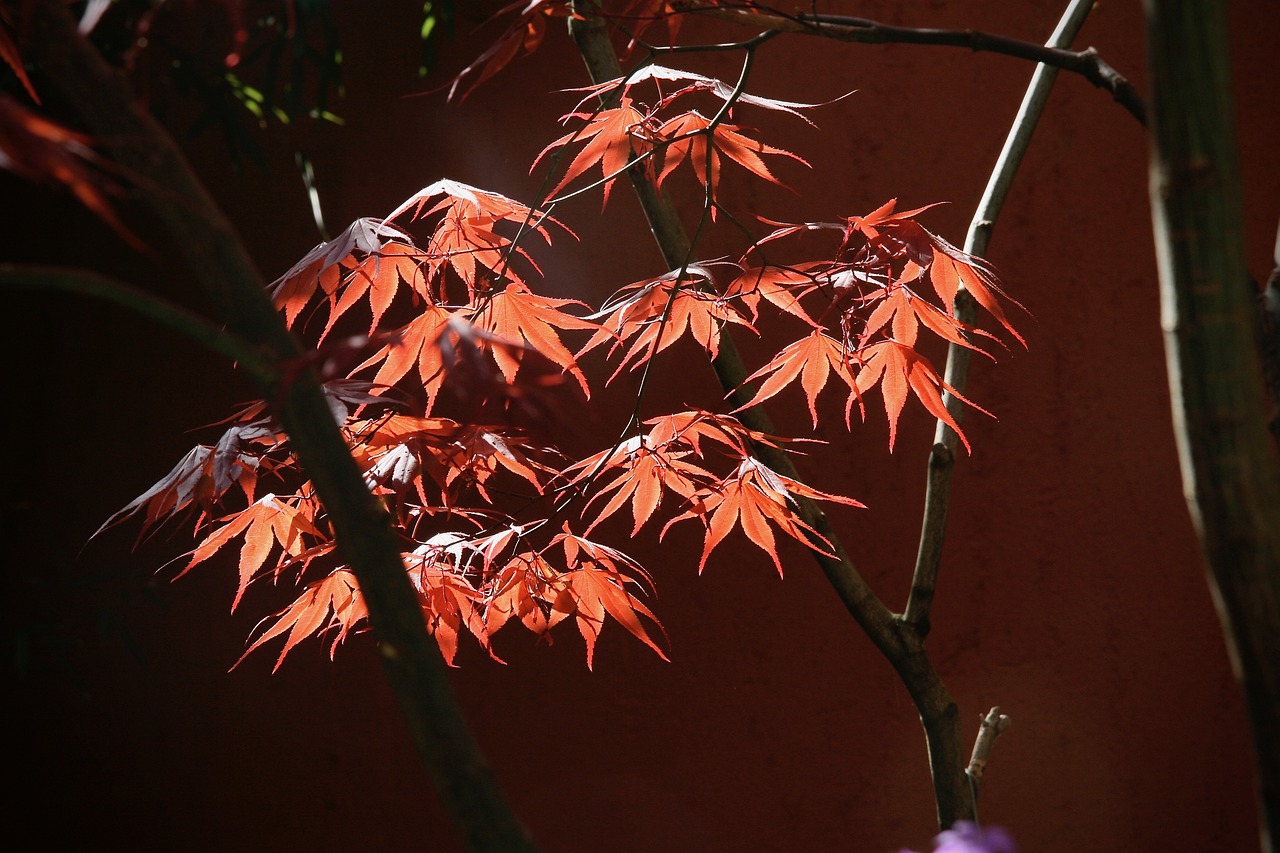
Understanding Color Theory
Color theory is more than just a set of rules; it’s the heart and soul of painting. When you pick up a brush, the colors you choose can completely change the mood and impact of your artwork. Think of color as the emotional language of your canvas. Just as a well-composed symphony can stir deep feelings, the right combination of colors can evoke joy, sadness, or even serenity. So, how do you harness this powerful tool?
At its core, color theory revolves around the color wheel, which organizes colors in a way that highlights their relationships. The primary colors—red, blue, and yellow—are the building blocks. From these, you can create secondary colors (green, orange, and purple) by mixing two primary colors. But it doesn’t stop there! Tertiary colors emerge when you mix a primary with a secondary color, leading to a rich palette that can express a vast array of emotions.
Here’s a quick look at how different color combinations can impact your artwork:
| Color Combination | Emotional Impact |
|---|---|
| Complementary Colors (e.g., red and green) | Creates contrast and vibrancy, drawing attention |
| Analogous Colors (e.g., blue, blue-green, green) | Produces harmony and a sense of peace |
| Monochromatic Colors (variations of a single color) | Evokes unity and simplicity |
Understanding these combinations allows you to manipulate the viewer's emotions effectively. For instance, if you want to create a sense of calm, consider using analogous colors that blend seamlessly together. On the other hand, if you're aiming for excitement or tension, complementary colors can create that jarring effect that captures attention.
Another essential aspect of color theory is the concept of warm and cool colors. Warm colors, like reds and yellows, tend to be energizing and can make a space feel inviting and vibrant. Cool colors, such as blues and greens, often convey tranquility and can give the illusion of more space. By balancing warm and cool colors in your work, you can create depth and interest, guiding the viewer's eye through your painting.
So, how do you apply this knowledge to your own work? Start by experimenting with different color palettes. Try creating a small series of paintings using various combinations to see how they affect the overall feel of your artwork. Don't be afraid to mix things up! Sometimes, the most unexpected color choices can lead to stunning results.
In summary, color theory is a powerful ally in your artistic journey. By understanding how colors interact and the emotions they can evoke, you can breathe life into your paintings and communicate your ideas more effectively. Remember, every stroke of your brush is an opportunity to express yourself, so use color boldly and watch your creativity flourish!
- What are the primary colors? The primary colors are red, blue, and yellow. These colors cannot be created by mixing other colors together.
- What is the difference between warm and cool colors? Warm colors (like reds and yellows) are energizing, while cool colors (like blues and greens) are calming.
- How can I choose a color palette for my painting? Consider the mood you want to convey and experiment with different combinations of complementary, analogous, or monochromatic colors.

Finding Your Artistic Style
Developing a unique artistic style is not just a phase; it’s a journey of self-discovery and expression. Just like a fingerprint, your artistic style is inherently yours, shaped by your experiences, emotions, and inspirations. So, how do you embark on this fascinating quest to find your voice as an artist? It starts with exploration and experimentation. You might feel like a kid in a candy store, overwhelmed by the myriad of choices, but that’s part of the fun!
To kickstart your journey, consider dabbling in various styles. You might find yourself drawn to the bold strokes of Impressionism, the intricate details of Realism, or perhaps the vibrant colors of Abstract art. The key is to allow yourself to play and not restrict your creativity. Remember, every artist was once a beginner, and it’s perfectly okay to mimic styles initially as a way to learn. You can even create a mood board with images that resonate with you, serving as a visual inspiration for your own creations.
As you explore, pay attention to what excites you. Ask yourself questions like:
- What colors make me feel alive?
- Which subjects captivate my attention?
- What techniques do I enjoy using the most?
By reflecting on these questions, you’ll start to uncover patterns that point to your emerging style. Keep a sketchbook handy to jot down ideas, doodles, or even quotes that inspire you. This journal will become a treasure trove of thoughts that can guide your artistic decisions. Over time, you’ll notice a natural evolution in your work, as elements of your personality begin to shine through.
Another fantastic way to refine your style is to seek feedback. Share your work with friends, family, or fellow artists. Constructive criticism can be invaluable, offering insights that you might not have considered. Remember, though, that while feedback is important, it’s equally crucial to stay true to yourself. Don’t let others dictate your artistic direction; instead, use their input as a tool to enhance your vision.
Also, consider the power of contrast. Sometimes, experimenting with opposites can lead to unexpected breakthroughs. For example, if you usually paint serene landscapes, try your hand at chaotic abstracts. This not only stretches your skills but might also reveal aspects of your style that you hadn’t previously recognized.
Finally, don’t rush the process. Finding your artistic style is not a race; it’s a personal journey that unfolds over time. Embrace the ups and downs, the moments of clarity, and the periods of confusion. Each painting you create is a step closer to discovering who you are as an artist. So, grab your brushes, let your imagination run wild, and remember: the most beautiful styles are often born from the heart!
- How long does it take to find my artistic style?
Finding your artistic style is a personal journey that varies for everyone. It can take months or even years of exploration and practice. - Can I change my artistic style later on?
Absolutely! Artistic styles can evolve as you grow and experience new things. Embrace change as part of your creative journey. - What if I don’t have a clear style yet?
That’s completely normal! Keep experimenting and creating; your style will emerge naturally over time.
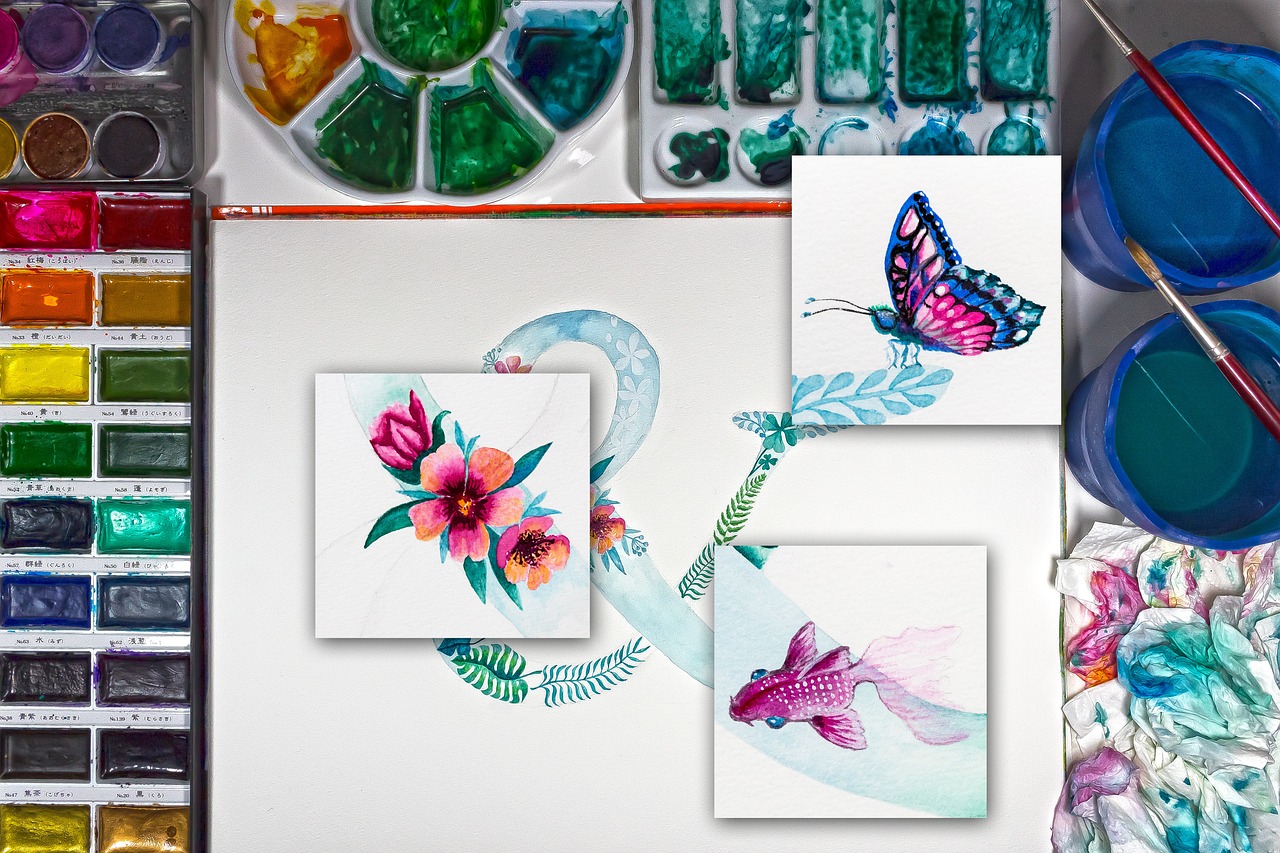
Experimenting with Different Mediums
When it comes to painting, the world is your oyster! Experimenting with different mediums can be one of the most exhilarating aspects of your artistic journey. Each medium has its own personality, characteristics, and quirks, much like people do. By diving into a variety of materials, you can discover new ways to express yourself and bring your creative visions to life.
Let’s start with watercolors. These beauties are known for their fluidity and transparency. They can create stunning washes and delicate details that can evoke a sense of tranquility. Imagine painting a serene landscape where the colors blend seamlessly into one another, like a gentle breeze flowing through a field of wildflowers. Watercolors are perfect for those who love to play with light and shadow, making them a fantastic choice for capturing the essence of nature.
On the other hand, acrylic paints are the chameleons of the art world. They dry quickly and can mimic the appearance of both oils and watercolors, depending on how you use them. This versatility allows you to experiment with techniques like glazing and layering. Just think of acrylics as your trusty Swiss Army knife in the studio—ready to tackle any creative challenge that comes your way! You can create bold, vibrant works or soft, subtle pieces, making them suitable for any style.
Then we have the classic oil paints. Known for their richness and depth, oils can take your artwork to a whole new level. They dry slowly, allowing you to blend colors and create textures that are simply mesmerizing. Picture yourself working on a still life, where the luscious colors of the fruits seem to pop off the canvas. The beauty of oil painting lies in its ability to convey emotion and depth, making it a favorite among many artists.
To help you navigate the different mediums, here’s a simple comparison table:
| Medium | Characteristics | Best For |
|---|---|---|
| Watercolors | Transparent, fluid, quick-drying | Landscapes, delicate details |
| Acrylics | Versatile, fast-drying, can mimic oils | Bold colors, mixed media |
| Oils | Rich, deep colors, slow-drying | Realism, expressive works |
But don't stop there! Consider mixed media as a way to further expand your creative horizons. Combining different materials—like adding fabric, paper, or even found objects—can add incredible depth and texture to your paintings. Imagine a canvas where the rough texture of burlap meets the smooth finish of acrylic paint, creating a visual feast for the eyes. Mixed media not only enhances the aesthetic appeal but also allows you to tell a story through your art.
Ultimately, the key to unlocking your artistic potential is to embrace experimentation. Don’t be afraid to make mistakes or create something that doesn’t turn out as planned. Each stroke of the brush is a step in your journey, helping you to discover what truly resonates with you. So grab your brushes, gather your paints, and let your imagination run wild! Who knows? You might just stumble upon your next masterpiece.
Q: What is the best medium for beginners?
A: Acrylics are often recommended for beginners due to their versatility, fast drying time, and ease of use. They allow for a wide range of techniques and are forgiving for those still learning.
Q: Can I mix different mediums in one painting?
A: Absolutely! Mixing different mediums can create unique textures and effects. Just be mindful of how they interact with each other, as some may require specific techniques to blend well.
Q: How do I know which medium is right for me?
A: The best way to find your preferred medium is to experiment! Try out different paints and materials to see which ones resonate with your style and creative vision.
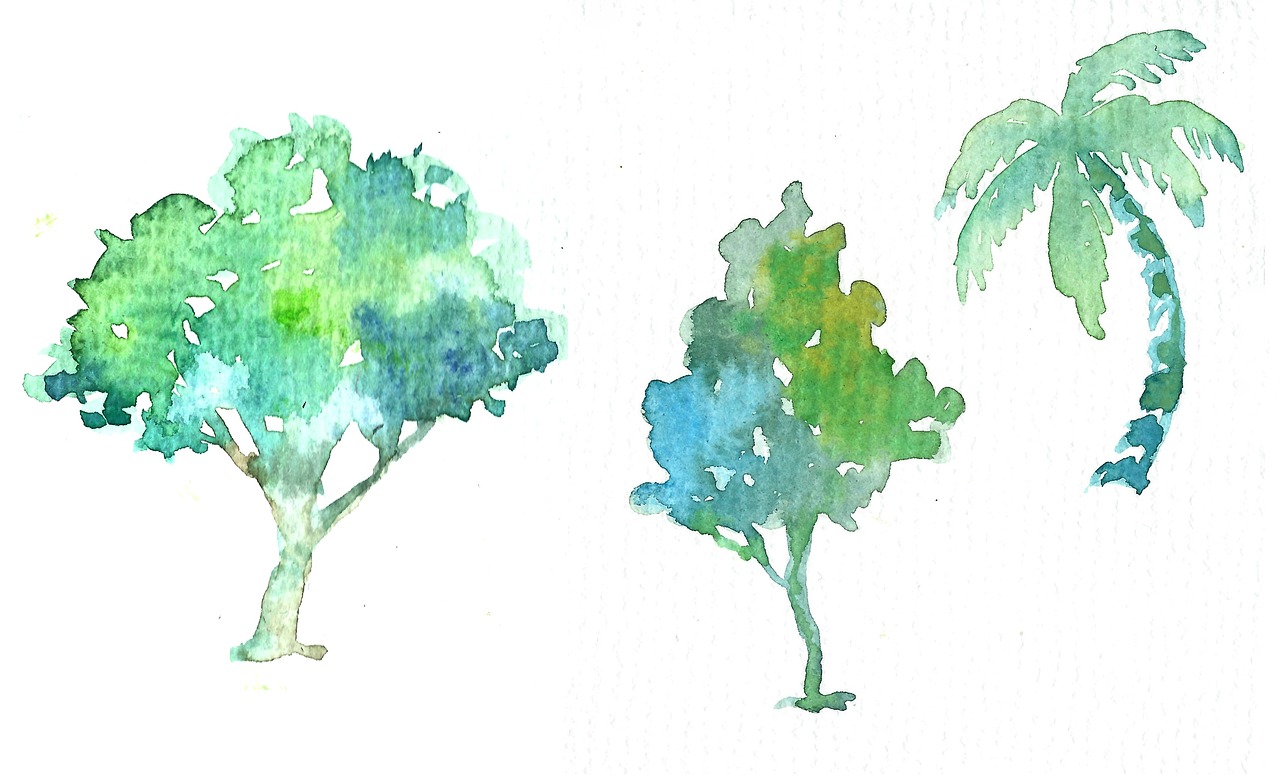
Watercolor Techniques
Watercolors are a fascinating medium that can bring your artistic vision to life with their unique fluidity and vibrancy. One of the most exciting aspects of working with watercolors is the variety of techniques you can employ to create stunning effects. It's like having a magical toolbox at your disposal, allowing you to manipulate color and form in ways that can evoke emotions and tell stories. So, let’s dive into some essential watercolor techniques that can elevate your painting skills.
One of the foundational techniques in watercolor painting is the wet-on-wet method. This technique involves applying wet paint onto a wet surface, which allows the colors to blend and flow into one another beautifully. Imagine throwing a drop of food coloring into a glass of water; the way it spreads and mingles is akin to what you can achieve with this technique. To master wet-on-wet, start by wetting your paper with clean water using a brush or spray bottle. Then, while the paper is still damp, apply your watercolor paints. You'll be amazed at the soft, dreamy effects you can create!
Another essential technique is layering. This involves allowing each layer of paint to dry before applying the next one. Layering can add depth and dimension to your artwork, much like building a sandwich where each layer contributes to the overall flavor. Start with a light wash as your base layer, and then gradually build up darker colors and details. This technique is particularly effective for creating shadows and highlights, giving your painting a more three-dimensional feel.
To further enhance your watercolor skills, consider experimenting with dry brushing. In this technique, you use a dry brush with very little paint to create texture and fine details. It's like using a feather to skim across the surface of your canvas, resulting in a delicate and intricate finish. Dry brushing can be particularly effective for depicting textures such as fur, grass, or the rough bark of a tree.
Additionally, you might want to explore the lifting technique, which allows you to remove paint from your paper. This can be done while the paint is still wet by using a damp brush or sponge to lift off color. It’s a great way to create highlights or correct mistakes. Think of it as erasing pencil marks from a drawing; it gives you the freedom to refine your work as you go.
Lastly, don't forget about salt technique. By sprinkling salt onto wet watercolor paint, you'll create fascinating textures as the salt absorbs the moisture and leaves behind unique patterns. It’s like adding sprinkles to a cake; it not only enhances the visual appeal but also adds an element of surprise to your artwork. After the paint dries, you can simply brush off the salt to reveal the stunning effects underneath.
In conclusion, mastering these watercolor techniques can significantly enhance your artistic expression and help you create captivating artworks. Whether you're a beginner or an experienced painter, experimenting with these methods can lead to unique results that reflect your personal style. So grab your brushes, unleash your creativity, and let the world of watercolors inspire you!
- What is the best paper to use for watercolors?
Watercolor paper is specifically designed to handle the moisture of paint. Look for 200 lb (rough or cold pressed) or 300 lb (hot pressed) paper for best results.
- Can I use regular paintbrushes for watercolor?
While you can use regular brushes, it's best to use brushes specifically designed for watercolors, as they hold more water and allow for smoother application.
- How do I prevent my colors from becoming muddy?
To avoid muddy colors, make sure to clean your brush thoroughly between color changes, and always work from light to dark.
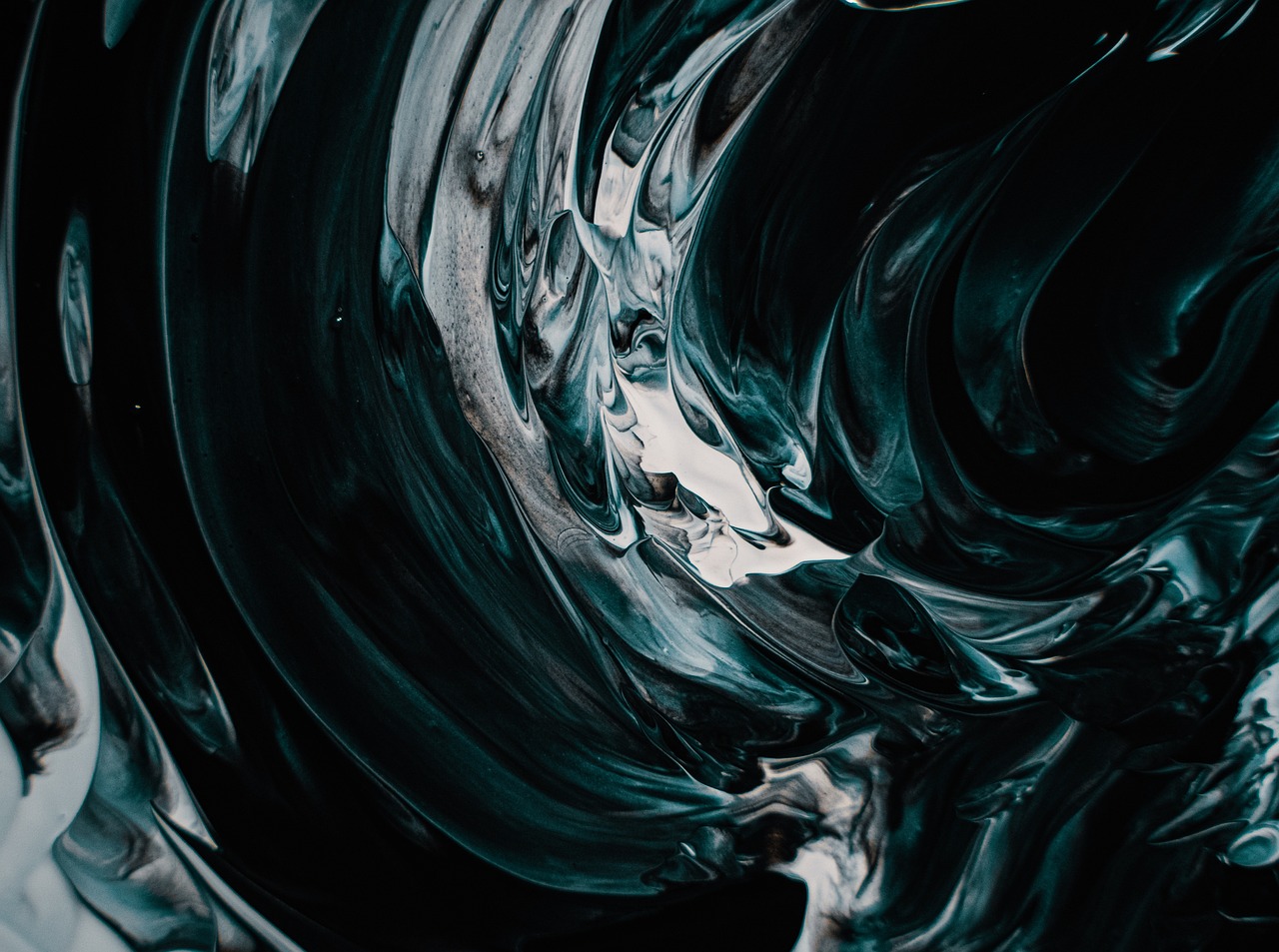
Acrylic Painting Tips
Acrylic painting is a fantastic medium that offers both versatility and user-friendliness. Whether you're a seasoned artist or just starting out, mastering some essential techniques can greatly enhance your acrylic painting experience. One of the first things to consider is the importance of working quickly. Acrylics dry faster than oils, which can be a double-edged sword. While this quick drying time allows you to layer and build up colors rapidly, it also means you need to be decisive with your brush strokes. To combat the rapid drying, consider using a mist spray bottle to keep your palette and the canvas moist, allowing for smoother blending and transitions.
Another key tip is to experiment with blending techniques. Acrylics can be blended in a variety of ways, and finding the method that works best for you can lead to stunning results. For instance, using a dry brush technique can create a textured effect that adds depth to your work. Additionally, glazing is a method that involves applying a transparent layer of paint over a dried base layer, allowing the colors underneath to shine through while adding richness and complexity to your painting.
Texture is another exciting aspect of acrylic painting. You can create intriguing surfaces by incorporating various materials into your work. Try using palette knives for bold, thick strokes or even adding sand, fabric, or other elements to your paint for a mixed media effect. Don't shy away from experimenting with different tools; sometimes, a simple sponge can create beautiful, unexpected textures.
When it comes to color mixing, remember that acrylics can be mixed just like any other paint, but they can also be layered. This means you can create a whole new palette by layering transparent colors over opaque ones. Understanding color theory will help you make informed decisions about which colors to combine for the desired effect. Always test your mixes on a scrap piece of paper before applying them to your canvas to avoid any unpleasant surprises.
Lastly, don't forget about the power of finishing touches. Once your painting is dry, consider applying a varnish to protect it and enhance the colors. This can make your artwork pop and give it a professional finish. Remember, every artist has their own style and preferences, so don't hesitate to adapt these tips to suit your unique approach. Embrace the journey of acrylic painting and let your creativity flow!
- What are the best brushes to use for acrylic painting?
Flat, round, and filbert brushes are popular choices. Each type can create different effects, so it's good to have a variety on hand.
- Can I use acrylic paint on canvas paper?
Absolutely! Canvas paper is a great alternative to traditional canvas and is often more affordable.
- How do I clean my brushes after using acrylic paint?
Clean your brushes with warm, soapy water immediately after use to prevent the paint from drying in the bristles.
- Can I mix acrylic paint with other mediums?
Yes, you can mix acrylics with various mediums, such as gels or pastes, to achieve different textures and finishes.
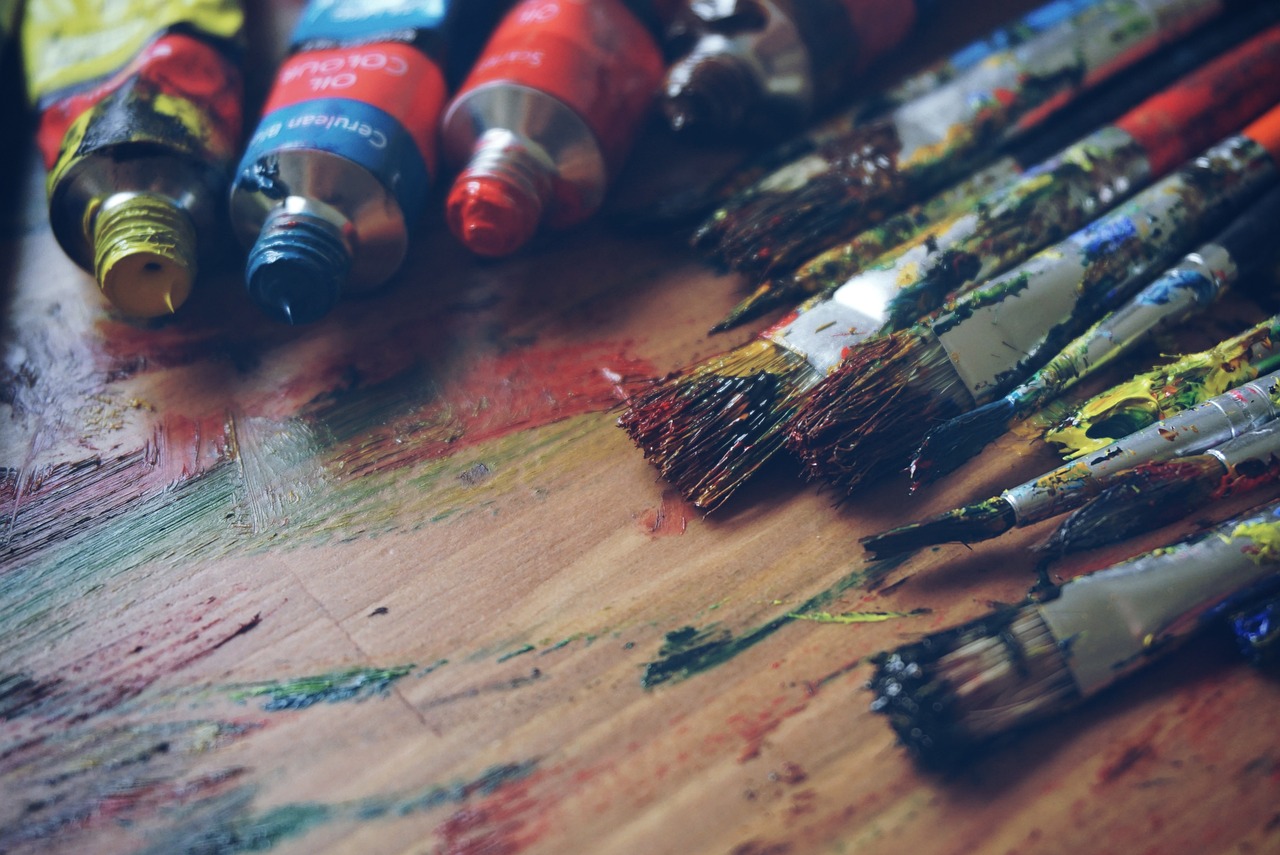
Incorporating Mixed Media
When it comes to painting, the traditional approach of using a single medium can sometimes feel limiting. This is where the exciting world of mixed media comes into play! By combining various materials and techniques, you can create artwork that not only captivates the eye but also invites the viewer to explore deeper layers of meaning. Imagine blending the vibrant hues of acrylic paint with the delicate textures of fabric or the organic shapes of natural materials. The possibilities are endless!
One of the greatest advantages of mixed media is the freedom it offers. You can experiment with different elements, such as collage, pastels, inks, and even found objects, to add depth and dimension to your paintings. For instance, incorporating pieces of old newspapers or magazines can create a narrative within your artwork, while the addition of fabric can introduce a tactile quality that draws people in. Each layer you add tells a story, making your work unique and personal.
To get started with mixed media, consider the following tips:
- Choose Your Base: Start with a solid foundation, such as canvas, wood, or heavy paper, that can support the weight of additional materials.
- Plan Your Composition: Sketch out your ideas before diving in. A rough layout can help you visualize how different elements will interact.
- Experiment Freely: Don’t be afraid to try unconventional materials! Items like buttons, string, or even sand can add surprising textures and effects.
- Layering Techniques: Use layering to create depth. Begin with a base layer of paint, then add collage elements, and finish with additional paint or ink for highlights.
Additionally, consider how the different materials interact with each other. For example, using a glossy medium over matte paint can create striking contrasts, while transparent layers can allow underlying colors to peek through, adding vibrancy to your piece. The interplay of textures and colors can evoke emotions and provoke thought, making your artwork not just visually appealing but also meaningful.
As you develop your mixed media skills, remember that there are no strict rules. Embrace the unexpected and allow your creativity to flow. Whether you’re creating abstract pieces or more representational works, mixed media can help you express your artistic voice in ways you never thought possible. So grab your supplies, let your imagination run wild, and watch as your paintings transform into multi-dimensional masterpieces!
Q: What are some common materials used in mixed media art?
A: Common materials include acrylic paints, watercolors, pastels, inks, collage papers, fabric, and found objects.
Q: Do I need to have prior painting experience to try mixed media?
A: Not at all! Mixed media is a fantastic way for beginners to explore creativity without the pressure of mastering a single technique.
Q: How can I protect my mixed media artwork?
A: Once finished, consider using a clear varnish or sealant to protect your artwork from dust and damage while enhancing its colors.
Q: Can I combine digital elements with traditional mixed media?
A: Absolutely! Many artists incorporate digital prints or illustrations into their mixed media pieces to create a unique blend of techniques.
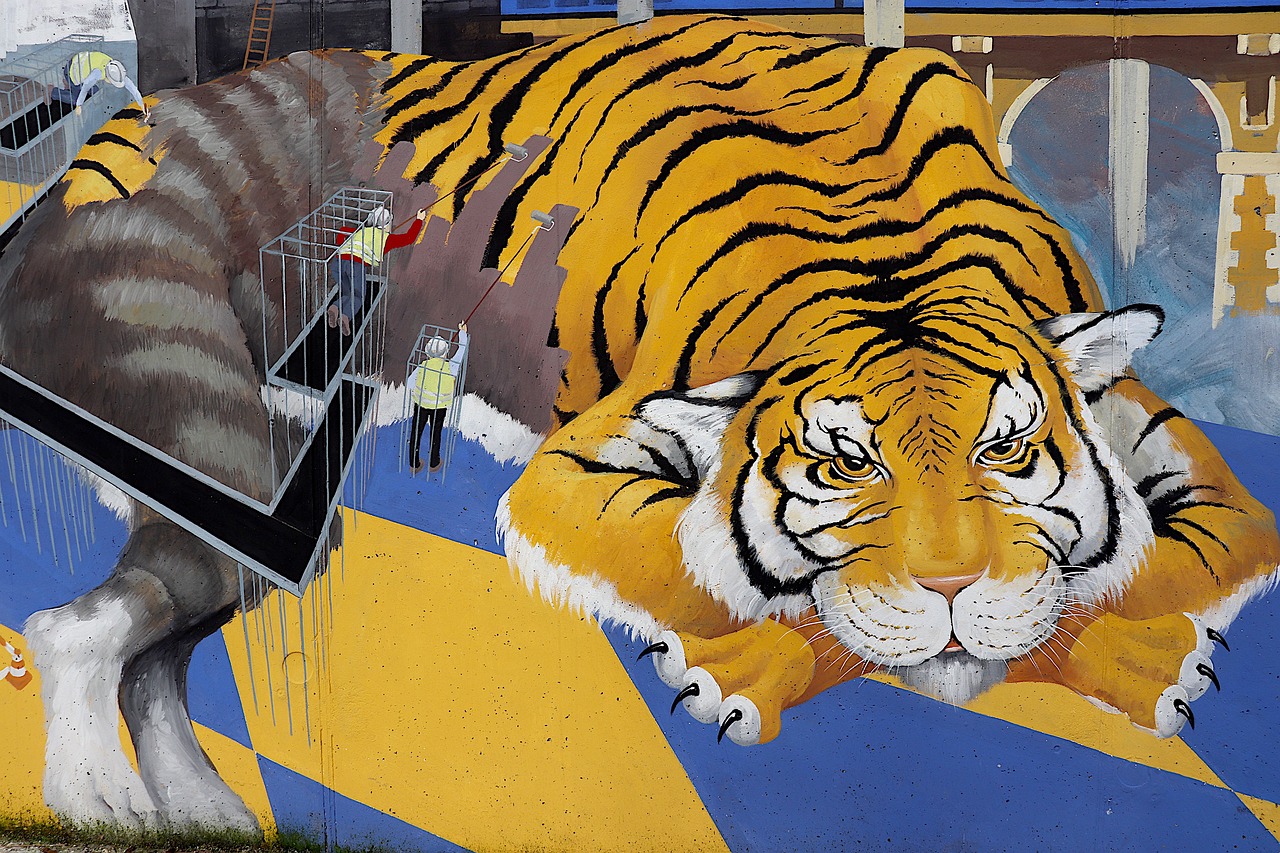
Finding Inspiration
Inspiration is the lifeblood of any artist, and it can come from the most unexpected places. Think about it: have you ever walked through a park and felt a rush of creativity just from the colors of the flowers? Or perhaps a conversation with a friend sparked an idea for your next masterpiece? The key is to be open to the world around you. Inspiration is everywhere—it’s about training your mind to see it.
To cultivate an inspiring environment, consider surrounding yourself with things that ignite your passion. This could be artwork that resonates with you, books filled with artistic techniques, or even your favorite music playing softly in the background. Creating a personal space that feels comfortable and inviting can make a world of difference. It’s like setting the stage for a great performance; the right atmosphere can unleash your creativity.
Moreover, don’t underestimate the power of nature. Nature is an incredible source of inspiration for many artists. The vibrant colors of a sunset, the intricate patterns of leaves, and the textures of rocks can all serve as a muse. Take a sketchbook on your next nature walk and jot down what you see. You might be surprised at how these observations can translate into your artwork.
Additionally, art history can provide a wealth of inspiration. Delving into the works of renowned artists can not only teach you new techniques but also spark ideas for your own creations. Consider visiting art galleries and exhibitions; the energy of the artwork and the stories behind them can be incredibly motivating. When you stand in front of a masterpiece, it’s almost as if you can feel the artist’s passion pouring out. This connection can be a powerful catalyst for your own work.
Another fantastic way to find inspiration is through art journaling. This practice allows you to explore your thoughts and emotions without the pressure of creating a finished piece. It’s like having a conversation with yourself on paper. You can doodle, write, and experiment with colors all in one place. Over time, these journal entries can serve as a springboard for larger projects, helping you to refine your ideas and develop a deeper understanding of your artistic voice.
Lastly, remember that inspiration can also stem from your personal experiences. Your life story is unique, and infusing your art with your experiences can add layers of meaning. Reflect on moments that have shaped you, whether they are joyful or challenging. These themes can resonate with others and create a connection through your art.
In summary, finding inspiration is about being curious and open-minded. Whether it’s through nature, art history, or personal experiences, the world is full of potential ideas waiting to be discovered. So grab your brush, open your heart, and let the inspiration flow!
Q: How can I keep my inspiration alive?
A: Keeping inspiration alive requires regular exposure to new experiences. Try visiting different environments, experimenting with new techniques, and engaging with other artists.
Q: What should I do when I feel uninspired?
A: Take a break! Sometimes stepping away from your work and allowing your mind to wander can lead to unexpected bursts of creativity. Engage in activities you enjoy, and inspiration will often return.
Q: Is it okay to draw inspiration from other artists?
A: Absolutely! Learning from other artists can provide valuable insights and techniques. Just remember to put your unique spin on it to maintain your artistic voice.
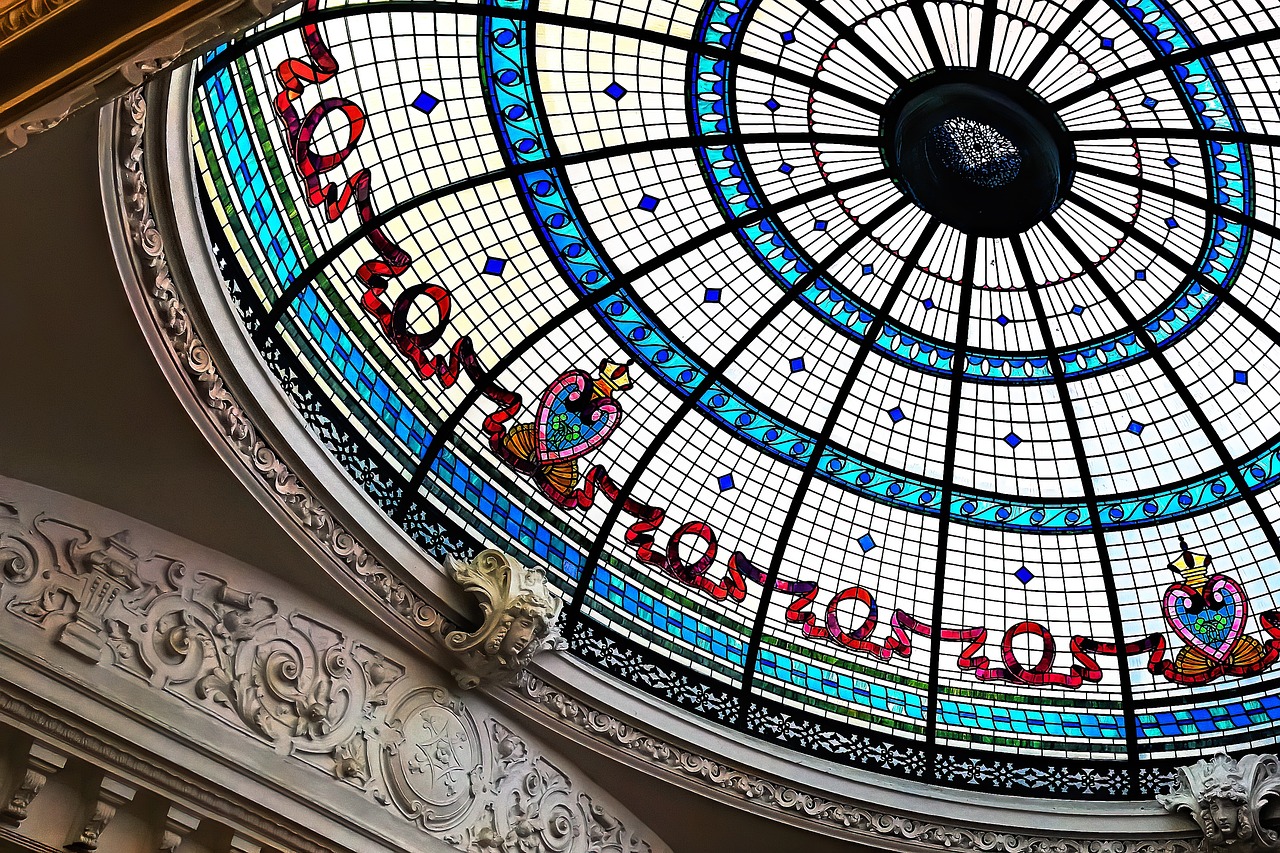
Art Journaling as a Tool
Art journaling is not just a creative outlet; it’s a powerful tool for self-exploration and idea generation. Imagine your journal as a sandbox where you can play with colors, shapes, and thoughts without the pressure of creating a masterpiece. It’s a space where you can let your imagination run wild and express your feelings freely. By incorporating various materials such as paints, sketches, and even collages, you can transform your journal into a vibrant tapestry of your artistic journey.
One of the best aspects of art journaling is its flexibility. You can use it to brainstorm for your next painting, document your daily experiences, or simply experiment with new techniques. The beauty lies in the process rather than the final product. This approach can help you break free from perfectionism, allowing you to explore your creative potential without the fear of judgment.
To get started, consider the following techniques that can enhance your art journaling experience:
- Mind Mapping: Use mind maps to visually organize your thoughts and ideas. This can help you see connections between different concepts and inspire new directions for your artwork.
- Color Swatches: Experiment with color combinations by creating swatches in your journal. This can serve as a reference for future paintings and help you understand how colors interact.
- Mixed Media Exploration: Don’t hesitate to incorporate different materials like fabric, magazine clippings, or even natural elements such as leaves. This can add depth and texture to your pages, making the journaling process even more exciting.
Another fantastic aspect of art journaling is that it allows you to document your emotional journey. You can express your feelings through colors and shapes, turning your emotions into visual art. This practice not only fosters creativity but also serves as a therapeutic outlet, helping you process your thoughts and experiences. Imagine flipping through your journal and seeing how your art has evolved alongside your personal growth!
As you embark on your art journaling adventure, remember that there are no rules. The key is to embrace the messiness of creativity. Allow yourself to make mistakes, experiment with new ideas, and celebrate your progress. Over time, you may find that your art journal becomes a cherished companion, reflecting your unique artistic voice and serving as a wellspring of inspiration for your painting endeavors.
Q1: What materials do I need for art journaling?
A1: You can start with basic supplies like a sketchbook, pencils, watercolors, acrylics, and markers. Feel free to add other materials like fabric, magazines, and washi tape as you go along!
Q2: How often should I journal?
A2: There’s no set frequency; it depends on your schedule and creative flow. Some artists journal daily, while others may do it weekly or whenever inspiration strikes.
Q3: Can art journaling improve my painting skills?
A3: Absolutely! Art journaling allows you to experiment with techniques and ideas without the pressure of creating a finished piece, which can enhance your overall painting skills.
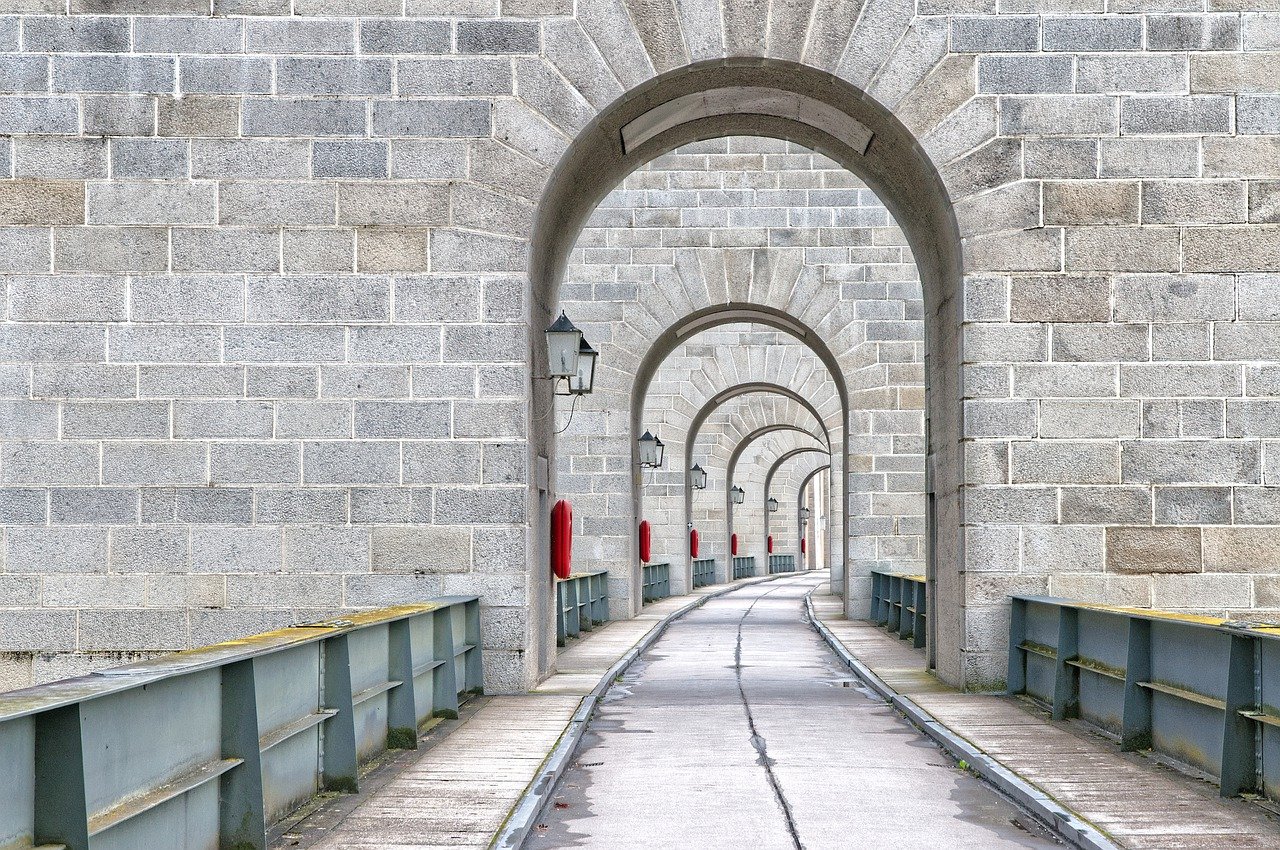
Visiting Art Galleries and Exhibitions
When it comes to fueling your artistic fire, few experiences are as invigorating as . Imagine walking through a space filled with vibrant colors, thought-provoking pieces, and the unmistakable energy of creativity. It’s like stepping into a different world, where every brushstroke tells a story and every sculpture invites you to ponder its meaning. But why is this experience so vital for artists, both budding and seasoned?
Firstly, galleries and exhibitions are treasure troves of inspiration. They showcase a variety of styles, techniques, and mediums that can expand your artistic repertoire. You might find yourself captivated by a particular artist’s use of color or the way they manipulate light and shadow. This exposure can ignite new ideas and push you to experiment with your own work. Have you ever found yourself staring at a piece, thinking, “I want to try that!”? That’s the spark of inspiration that galleries can provide.
Moreover, these venues often host workshops and artist talks, which can be incredibly beneficial. Engaging directly with artists can offer insights into their creative process and the challenges they face. It’s like having a backstage pass to the world of art! You can learn about their inspirations, the techniques they employ, and even their struggles. This knowledge can be invaluable as you navigate your own artistic journey.
But it’s not just about the art on the walls; it’s also about the atmosphere. Galleries are designed to evoke emotions and provoke thought. The lighting, the layout, and even the accompanying music contribute to a sensory experience that can deeply influence your creative mindset. Spending time in such an environment can help you break free from your usual routine and see the world through a different lens.
In addition, connecting with other art enthusiasts can lead to meaningful conversations and collaborations. You never know who you might meet at an exhibition! Whether it’s fellow artists, collectors, or curators, these connections can lead to opportunities you hadn’t considered. Engaging in discussions about the pieces on display can also help you articulate your own thoughts and feelings about art, enhancing your understanding of your own preferences and style.
To make the most of your gallery visits, consider these tips:
- Take your time: Don’t rush through the exhibits. Spend time with each piece, allowing yourself to absorb its details.
- Bring a sketchbook: Jot down your thoughts, sketches, or even color palettes that inspire you.
- Ask questions: Don’t hesitate to engage with gallery staff or other visitors. Their insights can enrich your experience.
In conclusion, visiting art galleries and exhibitions is not just a passive activity; it’s an active engagement with the world of creativity. It’s a chance to immerse yourself in the beauty of art, learn from others, and discover new aspects of your own artistic potential. So, the next time you have the opportunity to visit a gallery, seize it! You might just find the inspiration you’ve been searching for.
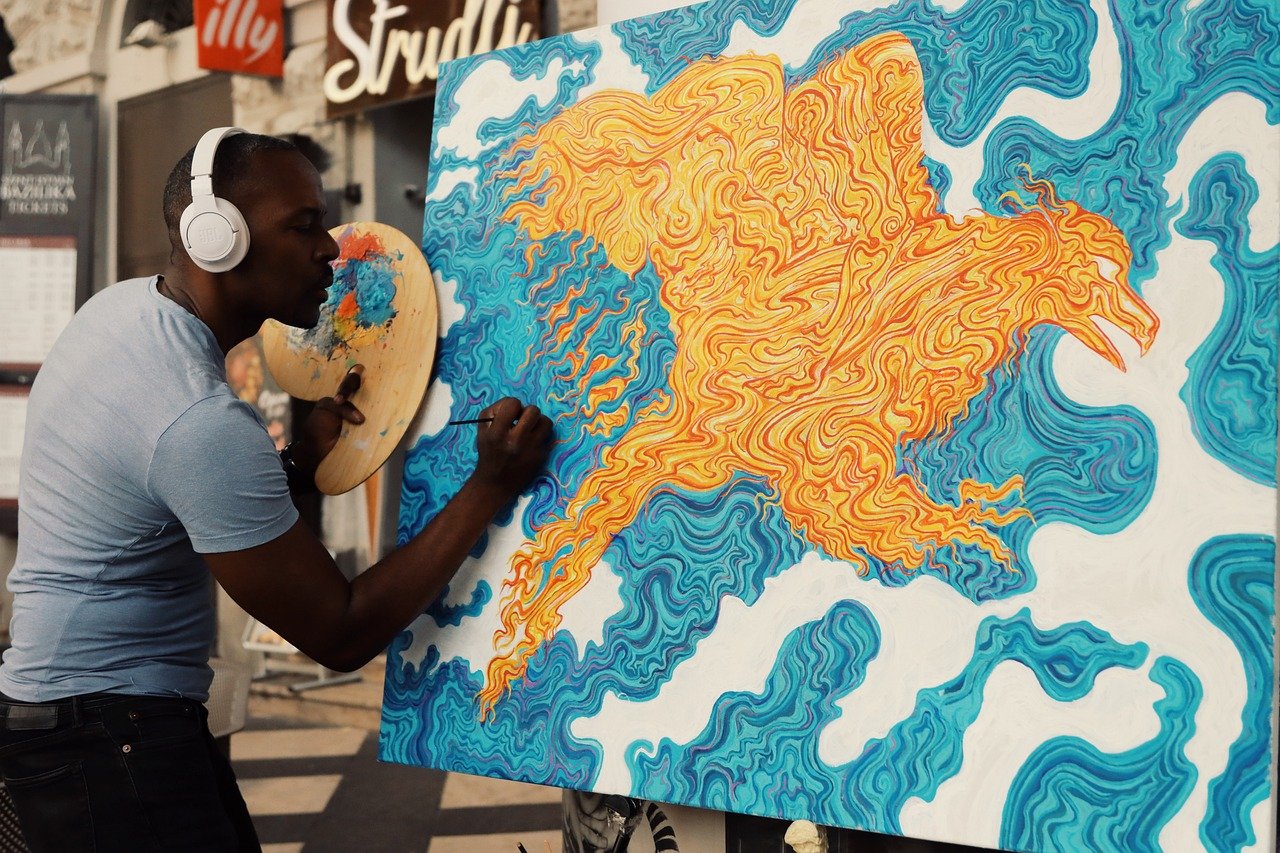
Building a Creative Routine
Establishing a consistent painting routine is key to nurturing your creativity. Just like athletes train regularly to enhance their performance, artists too must dedicate time to their craft. But how do you create a routine that actually works for you? Well, it starts with understanding your own rhythm and finding those golden hours when your creative juices flow the most. Are you a morning person who loves the quiet of dawn, or do you thrive in the late-night hours when the world is asleep? Identifying your peak creative times can significantly influence the quality of your work.
Once you've pinpointed your ideal painting times, it’s essential to create a dedicated space where you can immerse yourself in your art. This doesn’t have to be a fancy studio; even a small corner in your home can become your sanctuary. Make it inspiring! Decorate it with your favorite artworks, keep your materials organized, and ensure it’s a place where you feel comfortable and motivated. A well-set environment can stimulate your creativity and make it easier to get into the zone.
Another important aspect of building a creative routine is setting realistic goals. Think of your artistic journey as a marathon, not a sprint. It’s easy to feel overwhelmed by the vastness of what you want to accomplish, but breaking your ambitions down into manageable steps can keep you motivated. For instance, instead of aiming to complete a masterpiece in one go, set smaller objectives like practicing a specific technique or completing a sketch each day. This approach not only fosters a sense of achievement but also allows you to enjoy the process without the pressure of perfection.
However, even the most dedicated artists face creative blocks from time to time. It’s completely normal! The key is to have strategies in place to overcome these obstacles. When you feel stuck, try stepping away from your canvas for a bit. Engage in a different creative activity, such as doodling in your art journal or even taking a walk in nature. Sometimes, a change of scenery can reignite your inspiration. Additionally, consider experimenting with new techniques or mediums during these times; this can help shake things up and lead to unexpected breakthroughs.
Incorporating a mix of structured practice and spontaneous exploration into your routine can keep your creativity flowing. For instance, you might dedicate certain days of the week to focused practice, while leaving others open for experimentation. This balance can prevent monotony and keep your artistic spirit alive. Remember, the journey of creativity is just as important as the destination, so enjoy every brushstroke along the way!
- How often should I paint to improve my skills?
Consistency is key. Aim for at least a few times a week, even if it's just for a short session. - What if I don’t feel inspired to paint?
Try changing your environment or engaging with other forms of art to spark inspiration. - Can I mix different painting mediums?
Absolutely! Experimenting with mixed media can lead to exciting results and broaden your artistic horizons. - How do I deal with criticism of my work?
Remember that art is subjective. Use constructive feedback to grow, but stay true to your unique style.
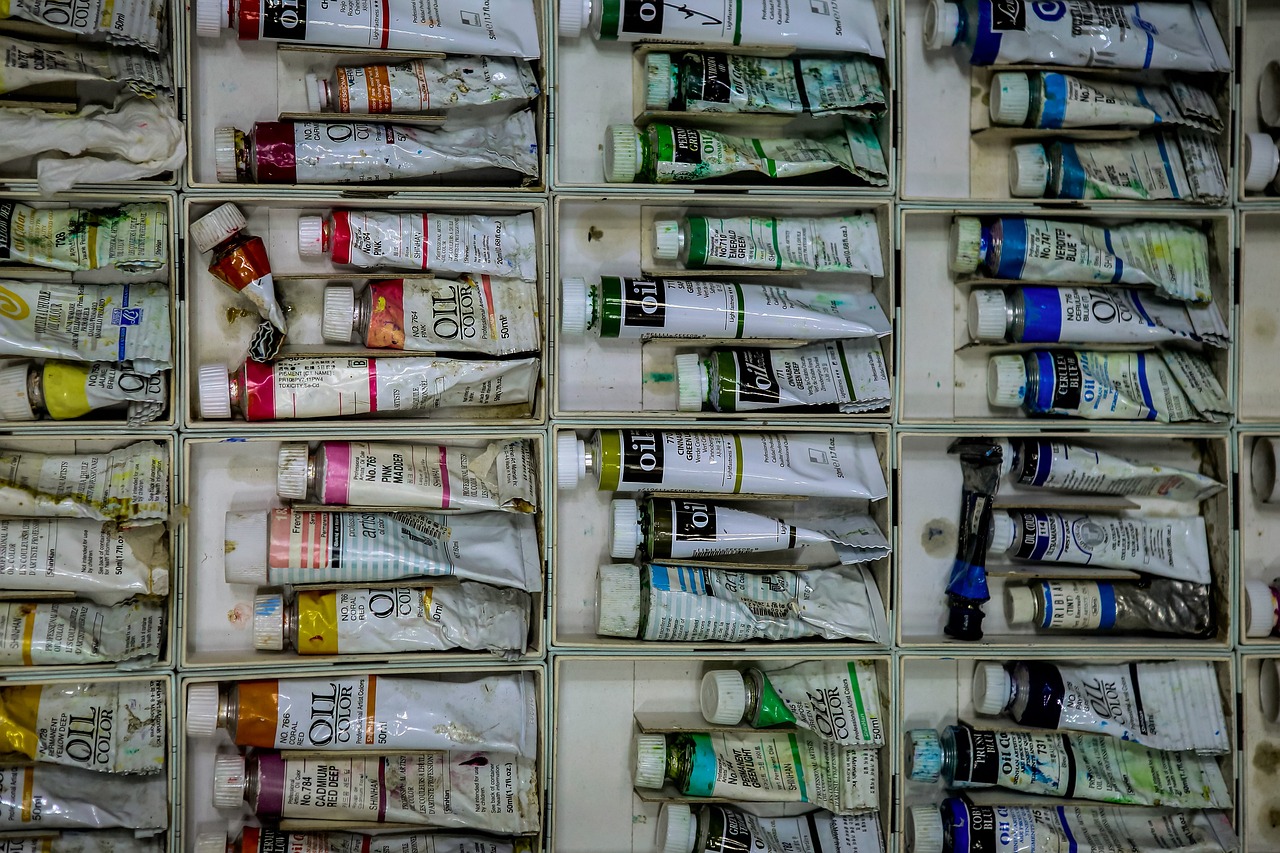
Setting Realistic Goals
When it comes to enhancing your painting skills, is like laying a solid foundation for a beautiful masterpiece. Imagine trying to paint a grand landscape without first sketching out the basic shapes; it would be chaotic, right? Similarly, having clear, achievable goals helps to channel your creativity and keeps you focused on your artistic journey. So, how do you go about setting these goals? Well, it starts with understanding where you are and where you want to go.
First off, it’s crucial to assess your current skill level. Are you a beginner just dipping your toes into the world of painting, or are you an experienced artist looking to refine your techniques? By evaluating your strengths and weaknesses, you can set goals that are not only realistic but also tailored to your specific needs. For instance, if you’re new to watercolors, a realistic goal might be to complete a simple landscape painting by the end of the month. On the other hand, if you’re more experienced, you might aim to experiment with a new technique or medium each week.
Another important aspect of setting goals is to make them measurable. This means breaking down your larger ambitions into smaller, actionable steps. For example, instead of saying, "I want to become a better painter," you might set a goal like, "I will practice painting for at least three hours a week." This way, you can track your progress and celebrate your achievements along the way. It’s like climbing a mountain; each step gets you closer to the summit, and every little victory deserves recognition.
Don’t forget to keep your goals time-bound. Setting deadlines can create a sense of urgency and motivate you to stay on track. You might say, "I will complete three paintings by the end of this month," or "I will attend a painting workshop next month." These time constraints can push you to prioritize your painting practice amidst the hustle and bustle of daily life.
Lastly, remember that it’s perfectly okay to adjust your goals as you grow and evolve as an artist. Life is unpredictable, and sometimes, you might find that what you initially aimed for no longer resonates with you. Embrace this fluidity! If you find that a particular technique isn’t working for you, it’s absolutely fine to pivot and try something new. The key is to remain flexible and open-minded, allowing your artistic journey to unfold naturally.
In conclusion, setting realistic goals is not just about discipline; it’s about nurturing your creativity and giving yourself the freedom to explore. By knowing where you stand, measuring your progress, setting deadlines, and remaining adaptable, you can create a fulfilling and enriching painting experience. So grab your brushes, set those goals, and watch your artistic potential soar!
- How do I know if my goals are realistic? Assess your current skill level and set goals that challenge you but are achievable based on your experience.
- What if I don’t meet my goals? It’s okay! Goals are a guide; if you don’t meet them, reflect on what you can adjust and keep moving forward.
- Can I change my goals over time? Absolutely! Your artistic journey is fluid, and it’s important to adapt your goals as you grow and discover new interests.
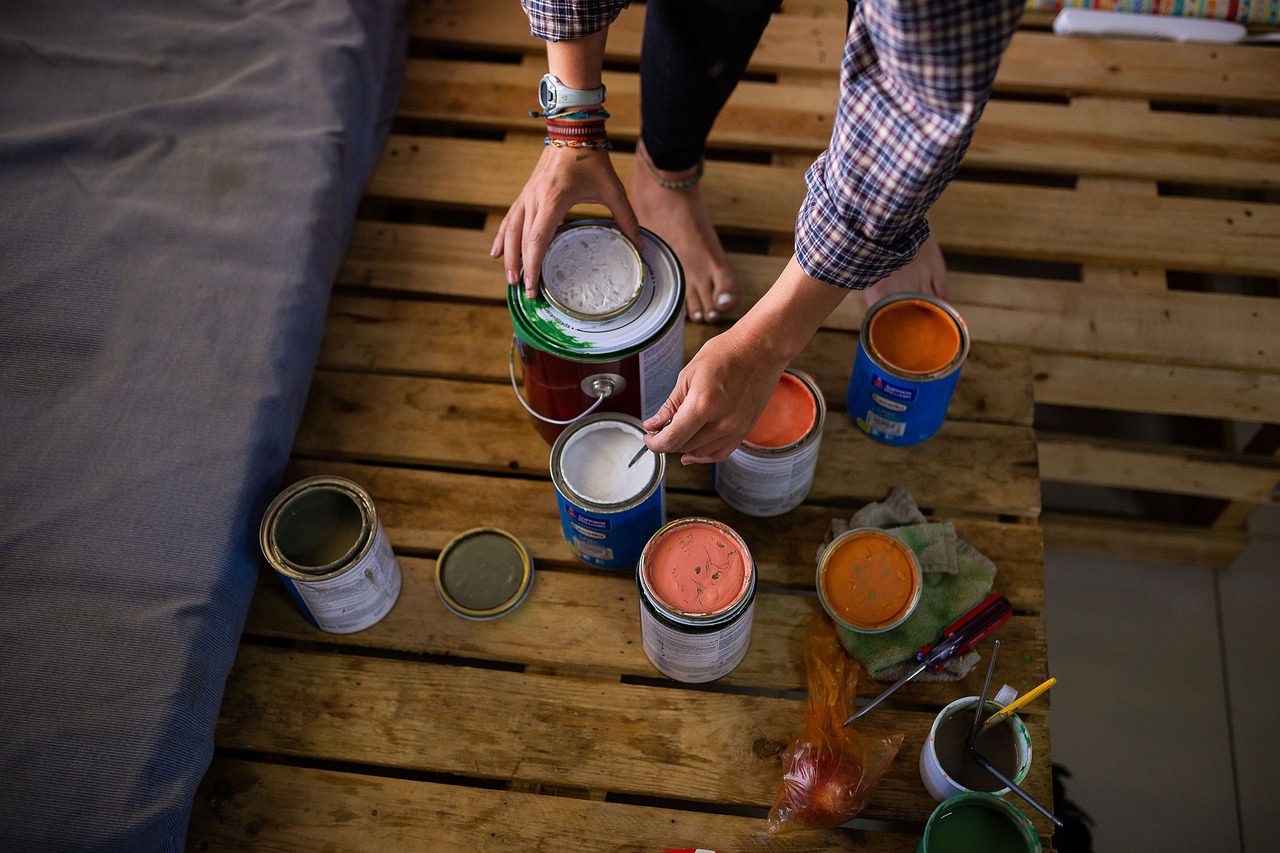
Overcoming Creative Blocks
Creative blocks can feel like an insurmountable wall, one that stands between you and your artistic expression. It's frustrating, isn't it? You sit down with your brushes, ready to unleash your imagination, but instead, you find yourself staring at a blank canvas, your mind as empty as the space before you. The good news is that these blocks are a common experience for artists of all levels, and there are effective strategies to break through them.
First, it's important to recognize that creative blocks often stem from various sources, such as fear of failure, perfectionism, or simply feeling overwhelmed. When you acknowledge these feelings, you can start to dismantle the barriers they create. One effective approach is to change your environment. Sometimes, a simple shift in your surroundings can ignite your creativity. Try painting outdoors, rearranging your studio, or even just moving to a different room. New sights, sounds, and smells can stimulate your senses and inspire fresh ideas.
Another technique to overcome creative blocks is to establish a free-writing or doodling session before you start painting. Set a timer for 10-15 minutes and allow yourself to write or draw without any judgment or expectation. This exercise can help free your mind from the pressure of producing a perfect piece and allow your subconscious to surface ideas you might not have considered. Remember, the goal here is not to create something 'good' but to simply get your thoughts flowing.
Additionally, consider setting small, manageable goals for your painting sessions. Instead of aiming to complete a masterpiece, focus on just getting some color on the canvas or experimenting with a new technique. This can alleviate the pressure you might feel and make the process more enjoyable. When you break down your tasks, it becomes less daunting, and you may find that the act of creating itself reignites your passion.
It's also beneficial to connect with other artists. Sharing your experiences with fellow creatives can provide new perspectives and encouragement. Attend local art groups or online forums where you can discuss your struggles and triumphs. You might be surprised by how many others have faced similar challenges, and their insights could be the key to unlocking your creativity.
Lastly, don't forget to give yourself permission to take a break. Sometimes, stepping away from your work can provide clarity and allow your mind to recharge. Engage in activities that inspire you—whether it's taking a walk in nature, visiting an art gallery, or simply enjoying a good book. These moments of relaxation can often lead to unexpected bursts of inspiration when you return to your canvas.
- What are some signs that I'm experiencing a creative block? Common signs include feeling uninspired, struggling to start or finish a project, and experiencing self-doubt about your artistic abilities.
- How long do creative blocks typically last? The duration varies from person to person. Some may experience a block for a few hours, while others might find it lasts for weeks or even months. The key is to be patient and persistent.
- Can I prevent creative blocks from happening? While it's impossible to eliminate them entirely, establishing a regular creative routine, setting realistic goals, and practicing self-care can help minimize their occurrence.
Frequently Asked Questions
- What is color theory and why is it important in painting?
Color theory is the study of how colors interact and influence one another. It's essential in painting because it helps artists understand how to create mood and harmony in their artwork. By mastering color combinations, you can evoke specific emotions and enhance the overall impact of your paintings.
- How can I find my unique artistic style?
Finding your unique artistic style is a journey of exploration and experimentation. Try out different techniques, mediums, and subjects until you discover what resonates with you. Don’t be afraid to mix styles or draw inspiration from artists you admire; your style will naturally evolve over time.
- What are some popular painting mediums I should try?
Some popular painting mediums include watercolors, acrylics, and oils. Each medium has its own characteristics and benefits. For example, watercolors are known for their fluidity, while acrylics are versatile and quick-drying. Experimenting with different mediums can help you find the one that best suits your artistic expression.
- What techniques should I learn for watercolor painting?
Essential watercolor techniques include wet-on-wet, where you apply wet paint onto wet paper, and layering, which involves building up colors gradually. These techniques can produce stunning effects and add depth to your artwork. Practice these methods to enhance your watercolor skills and discover new possibilities.
- How can I incorporate mixed media into my paintings?
Incorporating mixed media means combining various materials, such as collage elements, fabric, or even digital components, into your paintings. This approach allows for innovative expression and can add depth and texture to your artwork. Don’t hesitate to experiment and see what unique combinations inspire you!
- Where can I find inspiration for my artwork?
Inspiration can come from many sources, including nature, art history, and personal experiences. Surround yourself with inspiring elements, such as visiting art galleries, taking walks in nature, or even keeping an art journal. These practices can help you cultivate a creative environment and keep your artistic juices flowing.
- What is art journaling, and how can it help my painting?
Art journaling is a creative practice that combines writing and visual art. It allows you to brainstorm ideas, explore emotions, and experiment with new concepts before diving into a painting. This process can be incredibly freeing and can help you develop your artistic voice.
- How do I establish a consistent painting routine?
Establishing a consistent painting routine involves setting aside dedicated time for practice, even if it’s just a few minutes each day. Try to create a comfortable and inspiring space for your art, and set realistic goals to keep yourself motivated. Overcoming creative blocks is part of the process, so be patient with yourself!
- What should I do when I experience a creative block?
Creative blocks are common among artists, but they can be overcome. Try changing your environment, taking a break, or exploring a new medium. Sometimes, simply stepping away from your work can provide the fresh perspective needed to reignite your creativity. Remember, it's all part of the artistic journey!



















